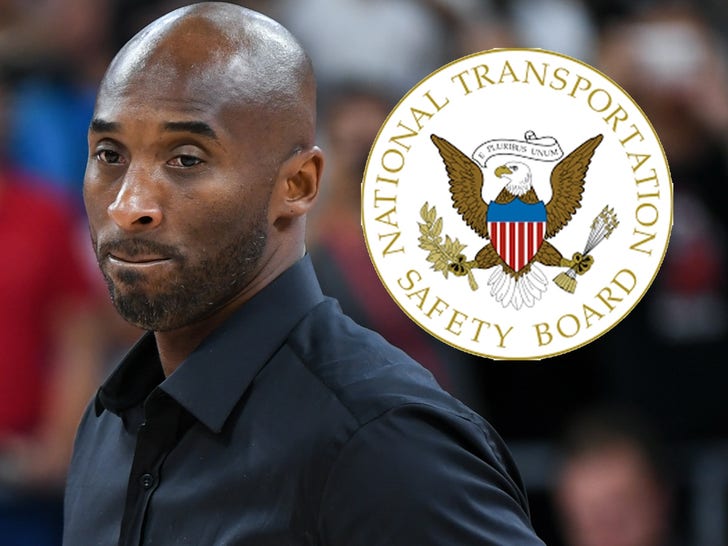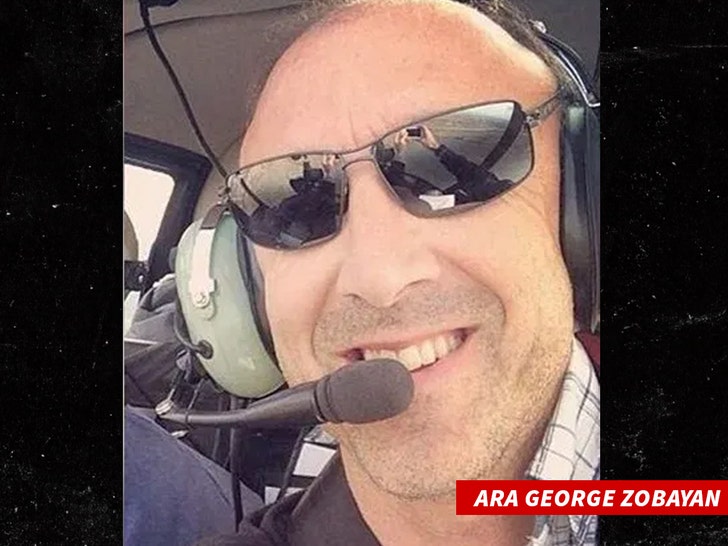Kobe Bryant Investigators Blame Pilot's Poor Decisions for Crash, Cite 'Self-Induced Pressure'
Kobe Bryant Helicopter Crash NTSB Blames Pilot's Poor Decisions for Crash ... Cite 'Self-Induced Pressure'
9:43 AM PT -- The NTSB has issued the official statement of probable cause -- blaming mistakes by pilot Ara Zobayan.
"The National Transportation Safety Board determines the probable cause of this accident was the pilot's decision to continue flight under visual flight rules into instrument meteorological conditions which resulted in the pilot spatial disorientation and loss of control."

"Contributing to the accident was the pilot’s likely self-induced pressure and the pilot’s plan continuation bias which adversely affected his decision-making and Island Express Helicopter Inc.'s inadequate review and oversight of its safety management processes."
6:57 AM PT -- Kobe Bryant did NOT pressure his helicopter pilot to take any dangerous risks to complete his doomed flight on Jan. 26, investigators say ... but the pilot may have put pressure on himself to forge ahead through dangerous conditions to please his famous client.
Pressure from an important client CAN lead pilots to make bad decisions, experts say ... but that wasn't the case with Kobe.
"There was no evidence that Island Express, the air charter broker or the client [Kobe Bryant] placed pressure on the pilot to accept the charter flight request or complete the flight and adverse weather."
So far, NTSB investigators believe the pilot experienced a condition called Spatial Disorientation in the moments before the crash, which made him think the aircraft was climbing when in fact it was descending. As one investigator put it, "The pilot doesn't know which way is up."
In fact, investigators say spatial disorientation is obviously a very dangerous condition -- and they want more aircraft operators to implement programs to help identify and prevent pilots from experiencing it during flight.
During the presentation, Vice Chairman Landsberg pointed the finger at the pilot -- saying he should have recognized the danger the weather presented that day and turned around and landed at Van Nuys airport, which was just a short distance from the crash site.
The NTSB Chairman Robert Sumwalt confirmed the pilot was under VFR [visual flight rules] and actually broke the law when he made the fatal decision to fly through the clouds while in VFR mode.
Investigators noted Kobe and the pilot had a long professional relationship and Kobe trusted him to fly his children even when the NBA star wasn't present.

"This type of relationship that he had with the client can lead to self-induced pressure during the en-route portion of the flight," investigators say. Officials say this self-induced pressure, along with "continuation bias" (the desire to reach your destination once the journey has begun" played a role in the crash.
One official put it this way ... "The pilot's decision to continue the flight into deteriorating weather conditions was likely influenced by a self-induced pressure to fulfill the clients travel needs, his lack of an alternative plan, and the plan continuation bias which strengthened as the flight neared the destination."
But, the main takeaway seems to be this ... officials believe Ara Zobayan had multiple opportunities to safely land the aircraft BEFORE experiencing spatial disorientation and crashing the aircraft. They also believe he ignored key parts of his training that could have saved the helicopter, even in those final minutes.
One more thing ... officials say having TWO pilots may have helped to prevent the crash, but it's not a sure thing. Sometimes, having a second pilot can lead to cockpit confusion and miscommunication. Other times, it can ensure everyone is following flight rules exactly. The investigators clashed about the impact a 2nd pilot could have made.
Another important note ... investigators are not throwing the aircraft operator, Island Express, under the bus. "We see crashes with other carriers that don't particularly indicate they're unsafe, but they've had a gap or a flaw or didn't know any better, but that doesn't make them a problem operator. They just need to do some things differently."
As for air traffic control's role in the crash, investigators say ATC's "actions, errors or omissions" did NOT contribute to the tragedy in any way.
Story developing ...
The federal agency tasked with investigating the helicopter crash that killed Kobe and Gianna Bryant, along with 7 others, will announce their findings in a Tuesday meeting -- including the probable cause of the accident.
National Transportation Safety Board will meet virtually Tuesday -- and it will be open to the public, so we'll live stream the whole thing here.
The NTSB has been working on the case ever since the aircraft -- a Sikorsky S-76 helicopter -- crashed in Calabasas on Jan 26, 2020.
As we previously reported, the NTSB initially said preliminary findings showed no outward evidence of engine failure -- and months into the investigation, officials said the pilot may have been disoriented when the aircraft was caught in deep fog.
Autopsy results showed the pilot, Ara Zobayan, was NOT on alcohol or drugs at the time of the crash ... and NTSB investigators said Zobayan’s girlfriend told them he was in great shape before the accident.
The NTSB said in June it found evidence showing Zobayan thought he was ascending over the fog, when in reality, the helicopter was going downward at a high rate of speed.
In addition to revealing the likely cause of the crash, the NTSB is also expected to make flight recommendations for similar aircraft in the hopes of preventing another tragedy.
Along with Kobe and Zobayan, seven others -- including Kobe's daughter, Gianna, and friends Alyssa Altobelli, Keri Altobelli, John Altobelli, Christina Mauser, Payton Chester and Sarah Chester -- perished in the Jan. 26, 2020 crash.
#RIP
Originally published -- 6:00 AM PT










